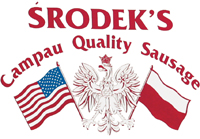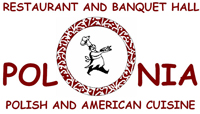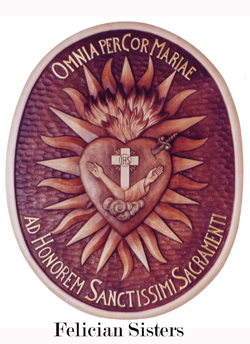|
ZOFIA’S HOMECOMING AND REUNION, MARCH 28 – 30, 2007
“But it’s not a homecoming,” Zofia Szostak insists. “Not really. For sixty years, American has been my home. But always, Poland is my homeland.”
It’s that practical way of thinking that made her the star of our trip to Poland; although we remained with her and her family for a couple days, a highlight of our whole Polish odyssey was her reunion with her childhood friend whom she had not seen in sixty years.
But first the plane. The courage that it took Zofia to make this entire trip is nothing to her experiences in World War II with the Home Army (“I was a great nobody,” she modestly insists), but if the truth be told, she had never before been on an airplane and confessed a dread of them. So it was really not until we actually saw her board the airplane and take off with us that we understood that she had conquered her ultimate fear. Imagine that, the fortitude to oust the Nazis and regain Poland, and she was put off by a Lot Airlines 767!
Anyway, the flight was too her ‘a wonderful disappointment’, by which she meant her fears had been much ado about nothing. She enjoyed it all, the attention from the pilots, the attentive service, and the chance to see clouds from above. And of course, she was the delight of the whole transatlantic flight.
We landed in Krakow, arguably Poland’s most beautiful city is situated on the Vistula River (Wisła) at the foot of Wawel Hill, where we were met by Rafal, our non-English-speaking driver who would accompany us the entire trip. From there it was on to the Holiday Inn of Krakow, a contemporary hotel located in the center of the city, less than a mile from Wawel Castle and a short distance from Market Square.
Now, God bless Zofia, but we were forced by the necessities of good television viewing to play a small trick on her. We wanted her reunion with her closest childhood friend Zofia Abramczuk to be a complete surprise, so we didn’t mention that we had brought her down from Gdank, and that she was staying in the same Holiday Inn. A bit tricky to make sure their paths didn’t cross, but all worked out in the end. We whisked Zofia # 1 in a horse-drawn carriage to the reunion point, the famed Wierzynek Restaurant , then went back for Zofia # 2, who was accompanied her by daughter Wanda. Neither spoke much English, but a number of Polish speaking traveling companions translated well, so it was easy enough to explain the ruse.
The meeting took place in a grand dining room of the Wierzynek, which dates back to the 14th century. The only drawback? It was up a few flights of stairs, and there were a couple times that Zofia # 2 looked like she might not make it. But make it she did, and the meeting was as absolutely magnificent as you might imagine. First, the look of puzzlement, then absolute recognition: they embraced, locked arms, chatted on and on about subjects we couldn’t—and probably have no right to—understand.
But we had the meal to contend with, so that kept us quite occupied.
In upcoming days, we returned with Both Zofias to the city of their birth, Bochnia. There was at first confusion, because the town has changed immeasurably since World War II. But then, a building which once held a book store was simultaneously recognized by both ladies, and they had to be restrained so that they didn’t leap from a moving car! The city of Bochnia is a mix of historical architecture and communist-era utilitarianism. Its large, open town square is ringed by quaint shops (one called ‘Drink Bar’—talk about utilitarian, and just beyond, the school where both Zofias attended stands opposite the grand St. Nicholas Basilica of Bochnia. The church of their childhood was a vital trip for these staunch Catholic women, and although they were a bit embarrassed that they entered in the middle of mass, the beauty of the place is overwhelming, and so much more, we imagined, for these wonderful old girls for whom it carried countless memories.
For Zofia, as well as for the crew, one of the most moving moments of her return to Bochnia was her opportunity to visit, for the first time, the statue of General Leopold Okulicki. Okulicki was the last commander of the anti-German underground Armia Krajowa (Home Army) and was murdered after the war by the Soviet NKVD, the forerunner to the KGB.
The momument is a powerful, writhing, near-living sculpture which stands on the former site of the Bochnia ghetto. As a member of the Home Army, Zofia stood before the statue of her former commander for many minutes of contemplation.
Then, saluted.
|







